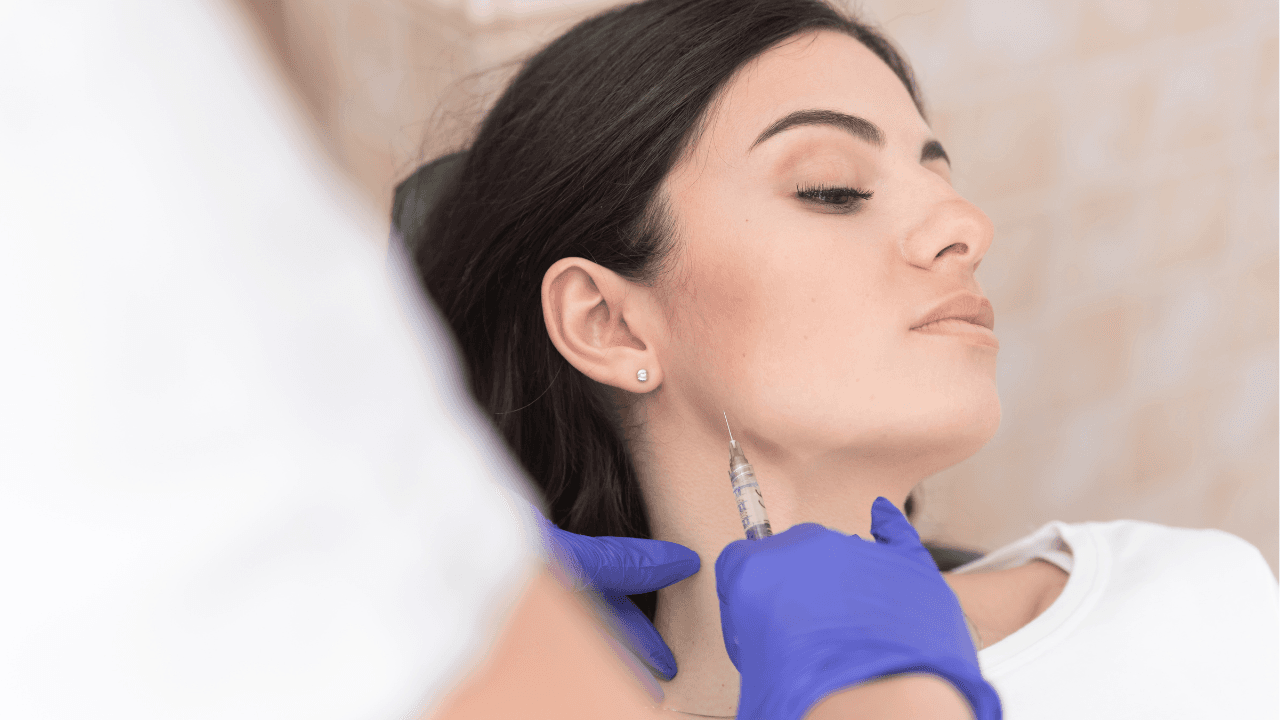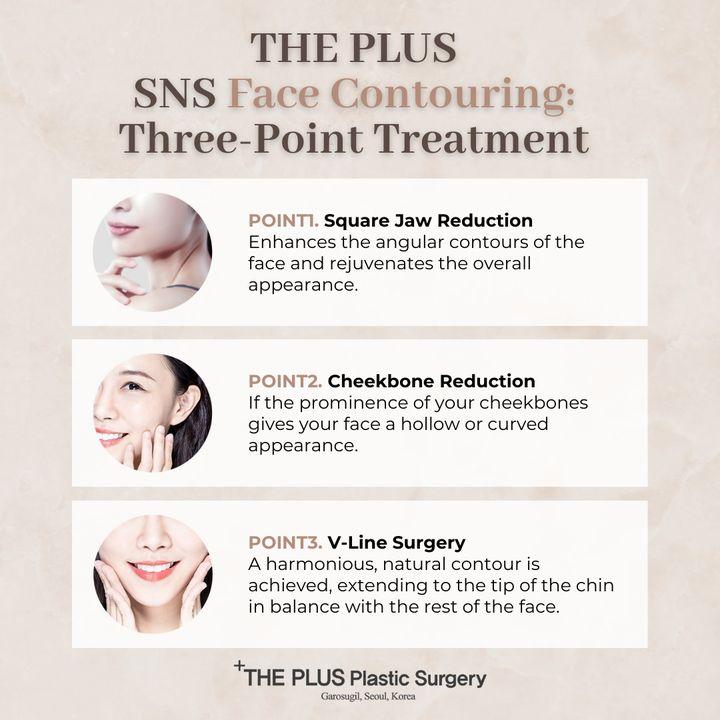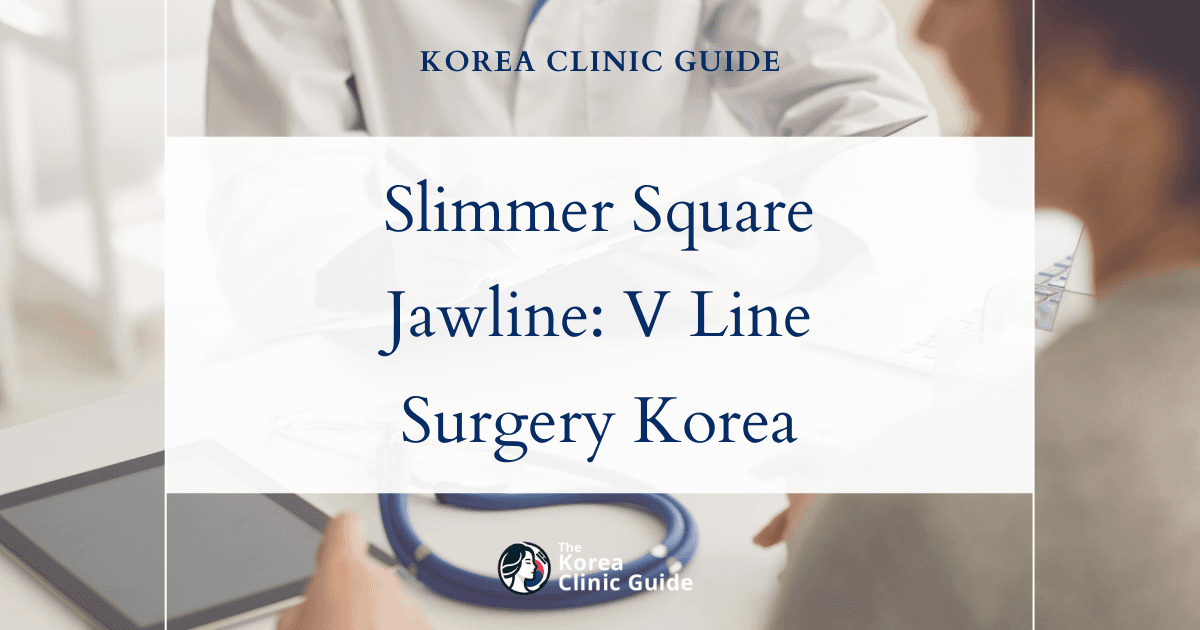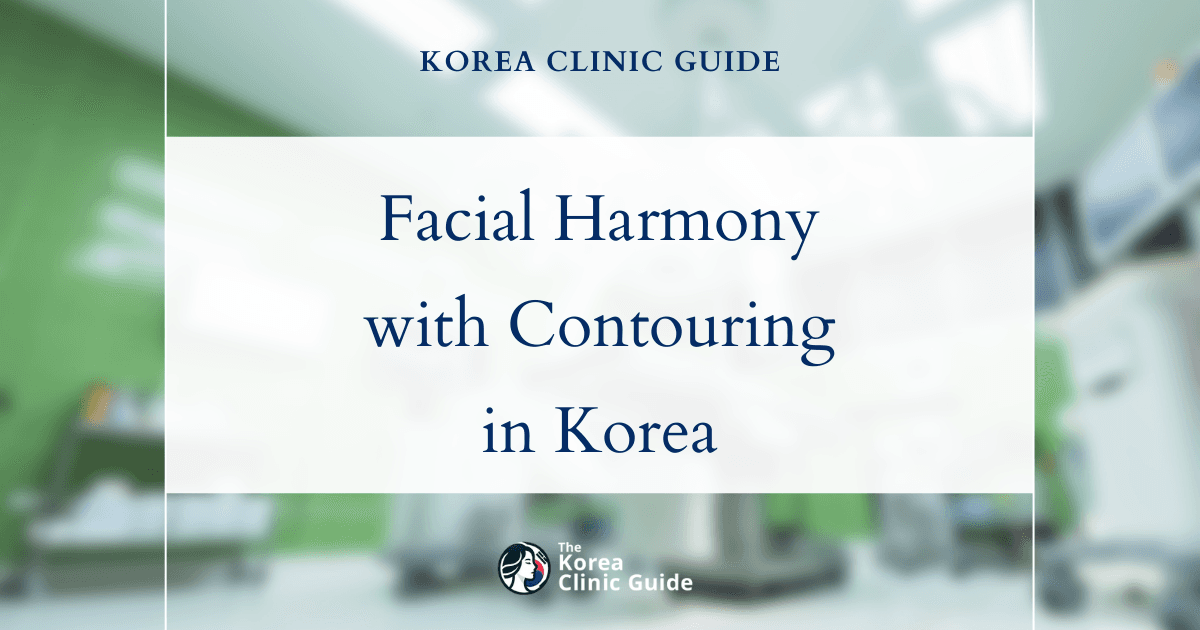Medical Tourism Blog
Jaw Surgery in Korea | Types, Best Clinics, Prices and More

Table of contents
- Jaw Surgery Overview
- Best Square Jaw Surgery Clinics in Korea
- Jaw Surgery in Korea
- Alternatives to Jaw Surgery
- Conclusion
Are you considering a life-changing procedure that not only enhances your facial harmony but also improves jaw function? Discover why jaw surgery in Korea is emerging as the top choice for those seeking both aesthetic and functional transformations, combining cutting-edge technology with renowned surgical expertise.

Jaw Surgery Overview
Jaw surgery, also known as orthognathic surgery, is a corrective procedure for jaw and teeth misalignments. It addresses both functional and aesthetic concerns. The surgery is typically recommended when orthodontics alone cannot correct the problem. It involves a collaborative approach between an orthodontist and a maxillofacial surgeon. The procedure is safe when performed by experienced surgeons, although risks like bleeding, infection, and nerve injury exist. Post-surgery, patients may face swelling, pain, and dietary restrictions. Virtual surgical planning (VSP) and 3D CT scanning are modern techniques used for optimal results.
Here are the main types of jaw surgery:
Upper Jaw Surgery (Maxillary Osteotomy)
In an upper jaw surgery, the surgeon targets the upper jaw to correct issues such as:
- A significantly receded or protruding upper jaw
- Crossbite
- Disproportionate tooth visibility
- Open bite
- Midfacial hypoplasia
During the procedure, cuts are made in the bone above the teeth, allowing the top jaw, including the roof of the mouth and upper teeth, to move as one unit. The jaw and upper teeth can be moved forward, backward, up, or down, and are often planned with computer assistance. For open bite cases, excess bone above the molars is removed or shaved away. The realigned jaw is then secured with plates and screws.
Lower Jaw Surgery (Mandibular Osteotomy)
Lower jaw surgery involves modifying the lower jaw to address:
- A receding lower jaw
- A protruding lower jaw
The procedure includes cuts behind the molars and lengthwise down the bone, enabling the front section of the jaw to move forward or backward as needed. The adjustment is stabilized using plates and screws during the healing process.
A genioplasty focuses on correcting a small or receded chin, which is often seen with a severely receded lower jaw. The procedure involves:
- Cutting a segment of the chin bone from the front of the jaw
- Moving the segment forward
- Securing it with plates and screws in its new placement
These surgeries can be performed individually or combined, depending on the patient's specific needs and goals. The aim is to achieve a functional, healthy jaw alignment and an improved facial appearance.
The surgery is performed under general anesthesia, often requiring a hospital stay of 2-4 days. Incisions are usually inside the mouth to avoid facial scars. The jawbones are cut, moved, and secured with plates and screws. Sometimes, extra bone is added from other body parts. Upper jaw surgery corrects issues like crossbites and open bites, while lower jaw surgery addresses receding or protruding jaws. Chin surgery can correct a small chin. After surgery, initial healing takes about six weeks, with complete healing up to 12 weeks. Orthodontic work continues, potentially for several years, to ensure proper alignment.

1. Jaw Surgery Procedure
The jaw surgery procedure begins with pre-surgical orthodontic treatment, often lasting 12-18 months, to align the teeth. Planning involves X-rays, pictures, and models of the teeth. During surgery, the patient is under general anesthesia. The surgeon makes cuts in the jawbones, moves them into the desired position, and secures them with surgical hardware. The surgery can take 2 to 5 hours, and hospitalization ranges from 1 to 4 days. Post-surgery, patients follow a strict diet and oral hygiene regimen and may experience swelling and discomfort.
2. Who Is Jaw Surgery for?
- Individuals with jaw misalignment issues that cannot be corrected by orthodontics alone.
- Patients with difficulty chewing, biting, or swallowing.
- Those with chronic jaw pain or TMJ disorders.
- People with obstructive sleep apnea caused by jaw problems.
- Individuals with facial asymmetry due to jaw discrepancies.
- Patients with a receding chin or protruding jaw.
- Those with a desire to improve facial aesthetics.
3. Jaw Surgery Aftercare
After jaw surgery, patients must adhere to a specific diet and oral hygiene routine. A liquid diet is recommended for the first few weeks, gradually progressing to soft foods. Swelling and discomfort are managed with medication and ice applications. Oral hygiene is crucial to prevent infection. Patients may experience changes in sensation and limited jaw movement, which improve over time. Follow-up appointments are necessary to monitor healing and remove any surgical hardware, like splints or stitches.
4. Jaw Surgery Recovery Period
The initial jaw healing period is about six weeks, with complete healing taking up to 12 weeks. Patients may return to work or school activities several weeks post-surgery, but full recovery can take up to a year. It is possible for additional orthodontic treatment to continue after surgery to refine the bite. Recovery experiences vary, and patients should consult their healthcare provider before resuming exercise or strenuous activities.
Best Square Jaw Surgery Clinics in Korea
Listed below are the best clinics in Korea:
| Clinic Name | Key Features | Special Techniques |
|---|---|---|
| THEPLUS Plastic Surgery | Comprehensive approach, renowned surgeons, international reputation | Rhinoplasty, revision rhinoplasty, facial contouring |
| Made Young Plastic Surgery | Commitment to safety and excellence, personalized care | Face lifts, face contouring, non-invasive lifting, rhinoplasty, eye surgery |
| DM Plastic Surgery | Expertise in jaw surgery, personalized care, cutting-edge techniques | Zygoma reduction, vivid-line surgery, bimaxillary protrusion surgery |
THEPLUS Plastic Surgery
THE PLUS Plastic Surgery clinic, located in the vibrant Garosu-gil area of Gangnam, Seoul, is a premier destination for those seeking world-class plastic surgery. The clinic is renowned for its comprehensive approach, offering a full range of services from initial consultations to surgery and post-operative care, all within its four-story facility. At the helm are Dr. Kim Taek Kyun and Dr. Jeong Jae Yong, both esteemed figures in the field of plastic surgery. Dr. Kim, a board-certified plastic surgeon, is celebrated for his expertise in rhinoplasty and facial contouring, and is recognized globally for his research on 3D implants. His philosophy centers on achieving a harmonious balance of facial features to enhance natural beauty. Dr. Jeong, the President of the Korean Society of Plastic Surgeons, is a leading authority on rhinoplasty, known for integrating function and aesthetics in his practice. Both doctors are committed to advancing the field through continuous education and participation in international medical symposiums.
THE PLUS Plastic Surgery clinic is distinguished for its specialization in rhinoplasty, revision rhinoplasty, and facial contouring, earning a stellar reputation both in Korea and internationally. The clinic's dedication to safety and patient satisfaction is evident in its team of highly experienced professionals, who actively engage in academic research and are members of prestigious medical societies. Dr. Kim's seminal work, "Rebuilding Nose," is a testament to his expertise and serves as a vital resource for rhinoplasty professionals worldwide. The clinic's commitment to excellence is further demonstrated through its educational outreach, where Dr. Kim and Dr. Jeong share their extensive knowledge with fellow surgeons, striving to elevate industry standards. For those considering advanced cosmetic procedures, THE PLUS Plastic Surgery offers exceptional results, guided by the skilled hands of its esteemed surgeons.
You can check out their website here: THEPLUS Plastic Surgery Website
Made Young Plastic Surgery
Made Young Plastic Surgery Clinic, located in Seoul's renowned Gangnam district, is a leading institution in the realm of aesthetic and rejuvenative plastic surgery. Known for its commitment to safety and excellence, the clinic combines traditional beauty ideals with innovative techniques to deliver outstanding results. Made Young stands out for its dedication to the highest standards of patient care, ensuring that each procedure is conducted with precision and attention to detail. The clinic offers a comprehensive range of services, including face lifts, face contouring, non-invasive lifting, rhinoplasty, and eye surgery, all designed to enhance and rejuvenate the natural beauty of its patients.
At the heart of Made Young is a team of highly skilled plastic surgeons, anesthesiologists, and medical staff who are not only experts in their respective fields but also deeply committed to patient well-being. Each treatment is meticulously tailored to meet the unique needs and aspirations of every individual, ensuring personalized care and optimal outcomes. Whether it's achieving a more defined jawline through V-Line surgery or rejuvenating the skin with non-invasive lifting techniques, Made Young aims to provide transformative experiences that boost confidence and satisfaction. The clinic's holistic approach ensures that patients leave not only with enhanced appearances but also with a renewed sense of self-assurance and vitality.
You can check out their website here: Made Young Plastic Surgery Website

DM Plastic Surgery
DM Plastic Surgery Clinic in Korea stands out as a premier destination for jaw surgery, offering a blend of expertise, personalized care, and cutting-edge techniques. The clinic is renowned for its team of highly experienced specialists, each with over a decade of practice in their respective fields. These board-certified plastic surgeons are alumni of the prestigious Yonsei University Hospital and have held significant positions, such as the head of the Department of Plastic Surgery at Gangnam Severance Hospital. Their commitment to excellence is evident in their membership with the Association of Plastic Surgery Medical Doctors, where they continuously strive to set benchmarks in the medical industry.
At DM Plastic Surgery, patients benefit from a comprehensive approach to facial contouring, particularly in jaw surgery. The clinic offers a range of procedures tailored to enhance facial aesthetics, including zygoma reduction, vivid-line surgery for square jaws, and bimaxillary protrusion surgery. Each treatment plan is meticulously crafted through personalized 1:1 consultations, ensuring that every patient receives care that is both scientifically grounded and aesthetically refined. This dedication to individualized treatment, combined with the clinic's state-of-the-art facilities and innovative surgical techniques, makes DM Plastic Surgery a leading choice for those seeking transformative jaw surgery in Korea.
Find more about this clinic here: DM Plastic Surgery Website
Jaw Surgery in Korea
Korea is renowned for its advanced medical technology and highly skilled surgeons, making it a special destination for jaw surgery. Korean clinics offer state-of-the-art facilities and employ innovative techniques like 3D imaging and VSP for precise surgical outcomes. The benefits of undergoing jaw surgery in Korea include access to expert surgeons, cutting-edge technology, and comprehensive post-operative care. Additionally, Korea's focus on aesthetic results ensures that patients not only function better but also enjoy improved facial harmony.
Alternatives to Jaw Surgery
For those considering alternatives to jaw surgery, options include orthodontic treatments like braces and Invisalign, orthodontic camouflage techniques, dental restorations, and facial fillers. These non-surgical methods may be preferred due to the lower risks and invasiveness. However, they may not address significant skeletal discrepancies or functional issues of the jaw.
| Procedure Price | Korean Won (₩) | USD ($) |
|---|---|---|
| Low Price | ₩5,500,000 | $3800 |
| High Price | ₩8,800,000 | $6100 |
Exchange rate as of 2025-04-30: 1 KRW = 0.0007 USD
Please note that these prices are approximate guidelines and can vary significantly based on the clinic and your individual circumstances.
Conclusion
Jaw surgery in Korea offers a blend of advanced medical expertise, aesthetic finesse, and cost-effectiveness. Patients considering this procedure should weigh the benefits against the risks and recovery time. Consulting with reputable clinics and surgeons is crucial for a successful outcome.
















